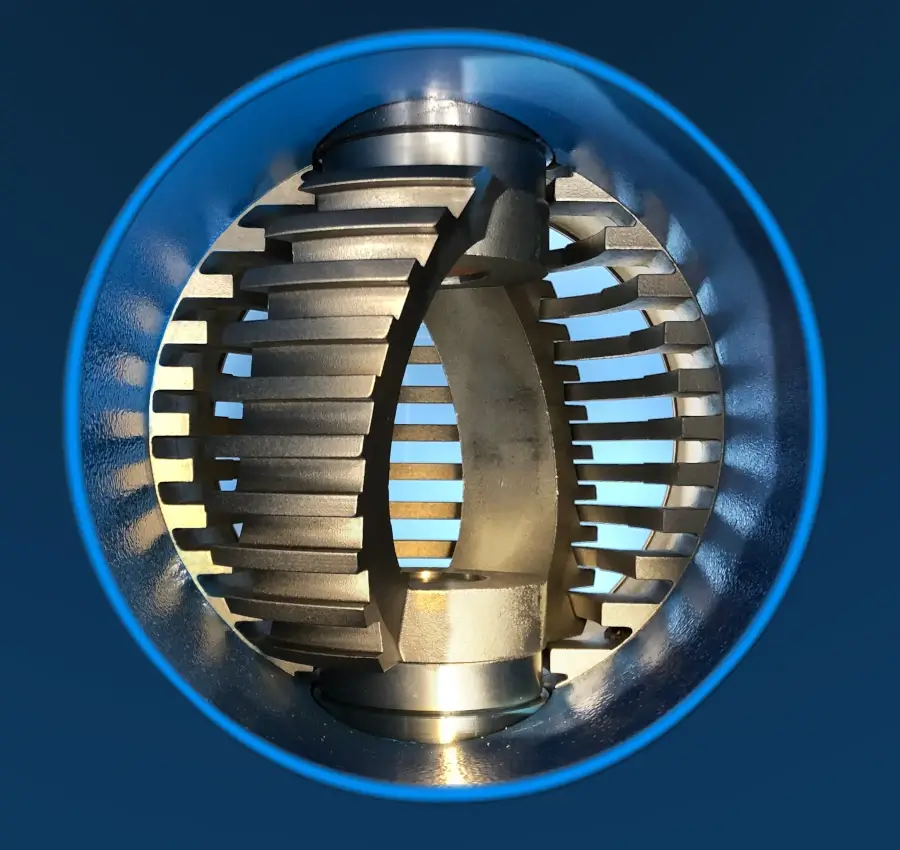Sludge grinders are inline processors that play an important role in the successful operation of wastewater treatment plants by reducing oversized solids that can causing jamming and damage to pumps and process equipment. Franklin Miller grinders are known for their heavy-duty capabilities and innovative designs with models available for a variety of application requirements.
Sludge processing is often the most costly, capital intensive and operationally difficult part of the treatment process. Sludge can be difficult to process and is made more so by the inclusion of foreign solids.
Pumps, centrifuges, belt filter presses, nozzles, trickling filters and digestors are all subject to frequent maintenance problems and downtime – even where there is fine screening at the headworks.
Small fibrous solids tend to re-weave into larger and larger rag mops which can cause a significant problem for pumps. In some cases these solids can destroy the pump impeller, or cause premature impeller wear. They can also overwhelm the pump power or corrupt the seals and eventually cause catastrophic mechanical seal feature.
Pointy, irregular and oversized solids can damage dewatering equipment, tear expensive filters and damage sensitive centrifuge drums. Nozzles can be plugged by oversized solids.

Harold Galanty invented the first sludge grinder with the introduction of Franklin Miller Inc.’s Pipeline Delumper® in 1970. When wastewater plant operators found there was an inline disintegrator that could reduce blockages directly in pipelines already working well in the chemical process industry, they started installing them in wastewater plants.
Many of these units are still operating in wastewater plants as well as chemical process plants worldwide.
The US Navy also employed the Pipeline Delumper® on hundreds of Navy frigates to process their wastewater.
Today, a variety of sludge grinders are offered by Franklin Miller designed to accommodate differing requirements.
The main grinder designs include:

Other names for sludge grinders include: macerators, mazerators, disintegrators, munchers, monsters, inline comminutors, chewers and shredders. They all refer to units that reduce the size of sludge solids through aggressive mechanical size reduction.
Franklin Miller offers an arsenal of processors optimized for specific applications.
The proper selection of a sludge grinder is dependent on a number of criteria unique to your plant’s requirements including:
CAPACITY: The Grinder should meet the capacity.
HEADLOSS: Some pumps are sensitive to headloss which can cause cavitation. Headloss characteristics should be consider in the selection of a device to be placed in the flow path, such as a sludge grinder.
EASE OF MAINTENANCE: While sludge grinders are designed to reduce maintenance on other equipment, their own ease of maintenance is an important criteria in selecting a unit. Questions to ask include: Is the unit designed for ease of maintenance? Does the unit have cutter cartridge or single piece rotor technology eliminating the use of hundreds of delicate individual cutter and spacer disks? Does the unit have an easy to maintain “drop-in” housing for easy removal of the cutting elements? Can the unit be maintained on-site or does it have to be sent back to the factory for repair?
PERFORMANCE: Some low cost grinders, similar to sink disposal units, are only designed for light-duty pre-digested solids. Others can handle tougher debris such as blocks of wood, rocks heavy rags. Is the grinder designed to reduce the solids in your system?
AUTOMATIC JAM SEQUENCE: Does the unit have a built-in jam sensing and reversing feature that will prevent an operator from having to come out and unclog the unit in the middle of the night.
CUTTER LIFE: Avoid units that run at excessively high rotational speeds (motor speed) due to their tendency for premature cutter blade wear. Units with slow speed high torque operation are generally preferred for extended cutter life and durability. Hardfaced cutters is also another excellent feature to look for in an inline grinder.
SEAL RELIABILITY: Is the system built with a reliable seal system that can withstand gritty sludge environment?